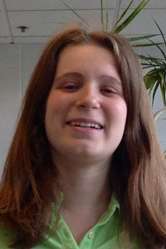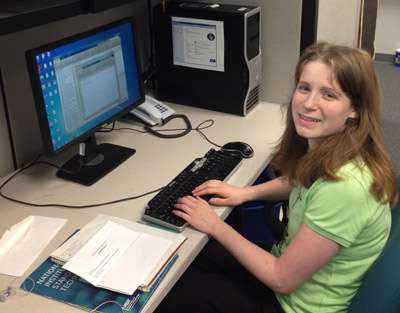Math/Statistics and Information Systems
“Mobility Management for Heterogeneous Networks”

Smart phones. Tablets. Apps. A decade ago, these words were not part of most people’s vocabulary. In the last ten years, the number of ways in which people communicate and the number of electronic devices used has grown steadily. But with this much higher usage, cell phone networks are having a more difficult time in managing situations when people with mobile devices move around and need to change the base station to which they are connected. One way to solve this problem is to introduce heterogeneous networks (HetNets for short). Heterogeneous networks provide service to users by incorporating cells with varying coverage areas. Large coverage areas that result from big, high-power cell towers are known as macrocells, smaller towers that cover a college campus or industrial park are considered picocells, and home base stations that are typically connected to the Internet via a coax or Ethernet wall jack and provide coverage over a very small area are called femtocells. If too few cell phone towers are serving an area, the probability of an outage increases. On the other hand, having too many cell towers in a given area can result in a ping-ponging effect where the device constantly switches base stations. This results in a very inefficient use of energy and network resources. The wireless industry is working on ways to reduce these bad effects.
This summer I have been running computer simulations with the MATLAB programming language and using mathematical analysis to look at how mobile device performance is measured. I validated theoretical results from a Monte Carlo simulation, and I helped improve some code by taking the mechanisms that are used to eliminate ping-ponging and handover failures into account. In this talk I will explain the importance of the MATLAB files I have coded and the simulations I have run and how they will benefit our technologically growing world.

How did you find out that you could do research in your field in the summer?
I learned about it as a Center for Women in Technology (CWIT) Scholar. Janet McGlynn of the Office of Undergraduate Research came to one of our seminar classes to tell us about the NIST fellowships.
How did you know that research at NIST was what you wanted to do?
I really wanted to see what it was like to work in a federal lab.
Did you apply to other places?
I also applied to several Research Experiences for Undergraduates in Math or Statistics at universities around the country. I was accepted to one of those at Michigan State in Probability and Discrete Math.
Was the application difficult to do? Did you have help with this?
It was easier than I expected. The Office of Undergraduate Education holds workshops to help you prepare a personal statement about which of the NIST labs and projects might be a good fit for you.
What was your summer research project?
I ran computer simulations looking at how cell phone networks could keep up better when people are on the go and the base stations to which they are connected keep changing. My work helped to measure the performance of mobile devices as the connections pass among different size towers, like from the giant ones that serve part of a city to the little base station at somebody’s home. We were looking for the best mix of coverage areas to minimize outages and keep the devices from inefficiently “ping-ponging” from one station to the next.
Who was your mentor for this project?
Dr. David W. Griffith, an electrical engineer in NIST’s Information Technology Lab. He was so nice and helpful, and his daughter, Indira, is now a freshman at UMBC!
How much time do you put into this work?
I worked on the project full-time for 11 weeks.
Were you paid? Where did you live?
The NIST fellows were paid $500 a week, and 140 of us stayed for free at the Hyatt House in Gaithersburg. It was so much fun hanging out with students from all over the country. We’d have lunch together at NIST, and we’d all head into D.C. or to the beach on the weekend.
What academic background did you have before you started?
I had taken Calculus II and III as a freshman along with Discrete Structures and a computer programming class.
How did you learn what you needed to know for this project?
I had never worked with MATLAB, a computing language that helps you run simulations and visualize lots of data, so I watched videos and looked at textbooks to get started.
What was the hardest part about your research?
There were times when it was hard to figure out the coding I needed. But Dr. Griffith was always willing to make suggestions if I hit a snag.
How does this research relate to your course work at UMBC?
Matlab is one of the main programs used for mathematical calculations, so it’s something I needed to learn. I’m already using it this fall in my Linear Algebra class!
What is your advice to other students about getting involved in research?
Recommendations from professors are crucial. I was lucky enough to get recommendations from two terrific teachers, Dr. Brian Dean and Dr. E.F. Charles LaBerge. Be sure you get to know some of your professors right from the start.
What are your career goals?
I am interested in the new field of “Big Data,” which combines math, statistics, and computer knowledge to analyze huge amounts of data. Google and Facebook created this kind of work, and now government agencies and companies like General Electric are looking for breakthroughs of their own in this area. I’m also interested in cyber-security, which is another rapidly growing field.
Do you now live on campus or commute to UMBC?
I’m from Montclair, N.J., just outside New York, and I live on campus.
8/25/2021